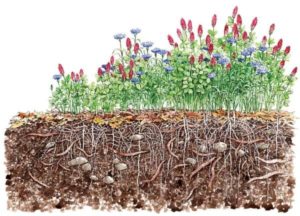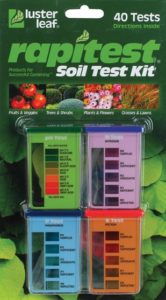GARDEN-TRANSFORMING SOIL TIPS

Healthy soil promotes plants:
-With more expansive, well developed roots
-That are more drought tolerant and less stressed by soil temperature swings
-With lush top growth (foliage, flowers, fruits)
-That are more resistant to disease and insect damage
-Less prone to winterkill
-Some Do’s and Don’ts for creating healthy soil
DO’s

* Assess your soil texture. Do you have clay, sandy or loam? Gardener’s Supply Company has a great article on how to do a soil test.
* Adding organic matter will correct poor soil texture (while also adding nutrients), resulting in crumbly garden loam. Materials include compost, aged manures, leaf mold, and mushroom compost
*Decide if
– the whole bed needs to be dug up and amended
– spot amending can be done as new plants are installed
– an annual application of nutrient-rich mulch can be applied for a gradual transformation
*To promote a healthy level of microorganisms, worms and macrofauna, don’t use chemicals
*Creating raised beds is a good solution to poor soil, drainage issues and allowing easier accessibility
*Apply a nutrient-rich mulch annually for weed control, to reduce water evaporation from the soil, minimize soil temperature fluctuations, control erosion and help with soil structure and fertility
Don’ts
* Walk on soil when prepping a bed or doing maintenance
* Rototill. Use a pitchfork or spade to prep garden soil.
* Work wet soil. This damages the soil structure
* Try to improve clay soil by adding sand. Odds are you’ll get cement instead
* Allow diseased or insect infected leaves to winter over on gardens
* Add peat moss to clay soils
